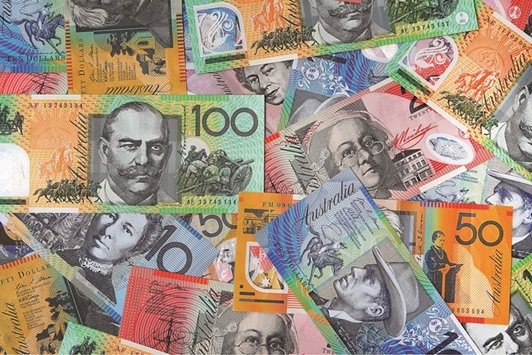June holds the promise of better days to come for the worst-performing major currency this month.
After a 5.1% slump in May, Australian dollar declines won’t extend below the 70 US cent level in the near term as the Reserve Bank of Australia and the Federal Reserve are both unlikely to change interest rates at their June meetings, according to Westpac Banking Corp, Australia’s second-largest lender by market value.
The odds favor that case as futures trading indicates an 11% probability of the RBA making a back-to-back cut in June while there’s a one-in-three chance the Fed will increase its key rate.
“Our call for the Australian dollar to dodge the 60s in the month ahead relies on a steady hand at both the Fed and RBA,” said Sean Callow, a senior foreign-exchange strategist at Westpac in Sydney.
“If the Fed doesn’t deliver a hike in June and the RBA doesn’t cut, then Australia’s dollar keeps some yield insulation for now.”
A lethal cocktail of a lower RBA policy rate and rising US Treasury yields undermined demand for Australian assets this month, as did the 20% plunge in the price of iron ore, the nation’s main export.
The Aussie may also have suffered from a historical bias toward selling the currency in May, whereas it has gained during the following month in 11 of the past 16 years.
Record-low core inflation readings at the end of April set the tone for May, spurring the central bank to lower its cash rate and slash price-growth forecasts.
Traders subsequently drove up the odds of further RBA cuts at the same time as US policy makers began talking up the chances of a near-term interest-rate increase. Those two forces have narrowed the yield premium Australia’s two-year bonds offer over US notes to the least in a decade.
To see Stevens’s latest comments on inflation, click here.
Callow predicts that the RBA will lower its benchmark in August with the Fed increasing its key rate the following month. It “will be hard for Aussie to avoid sub-70 then,” he said.
Westpac forecasts that the currency will end the year at 70 cents, though it could dip to as low as 68 in the interim, Callow said.
Australia’s dollar bought 72.18 US cents in Sydney on Thursday after falling to a 12-week low of 71.45 on May 24.
The median of forecasts added from May 9 on - following the RBA’s rate cut and changes to its inflation projection - is that the Aussie will rise to 73 cents by June 30.
Options traders put the odds of it remaining above 70 this quarter at about 50%.
The Aussie strengthened on Wednesday even after a report showed construction work in the first quarter decreased more than analysts expected.
The subdued response to the disappointing construction data “may signal that recent Australian dollar selling is increasingly stretched and points to upside risks” on a capital spending report Thursday “particularly if non-mining spending intentions increase,” Todd Elmer, a Singapore-based foreign- exchange strategist at Citigroup, wrote before the figures were released.
The local dollar advanced Thursday after the report on private capital expenditure indicated Australian companies plan outlays of A$89.2bn ($64.3bn) in the financial year starting July 1, 6% more than a previous estimate in February and beating economists’ forecast of A$86.7bn in a Bloomberg survey.

Australian dollar banknotes of various denominations are arranged for a photograph in Sydney. After a 5.1% slump in May, Australian dollar declines won’t extend below the 70 US cent level in the near term as the Reserve Bank of Australia and the Federal Reserve are both unlikely to change interest rates at their June meetings.
